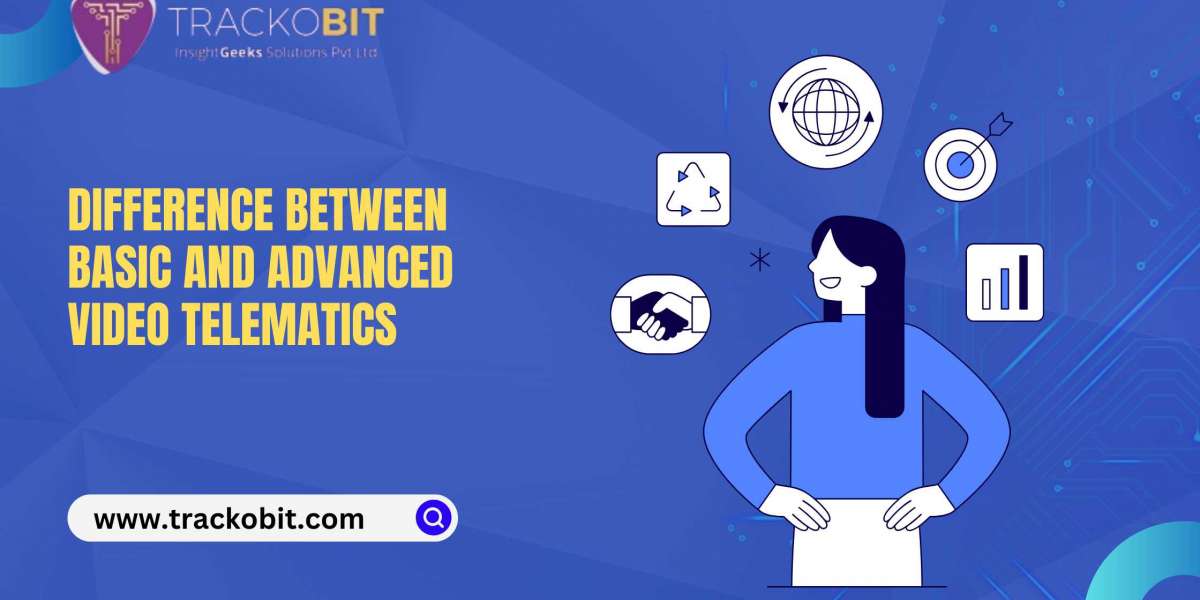Video telematics software employs video recording data with telematics to gain more comprehensive insights into any given vehicle. It also checks on driver behavior using cameras. The cameras are mounted inside and outside a vehicle. They work with telematics systems for data collection in real-time and outward transmission. It collects various data which includes driving speed, location, and frequency of sudden brakes or number of collisions.
There are two types of subscription one can get under video telematics systems- Basic and advanced. But, is there any difference between these two? Let's decide.
- Single camera
In general, the basic video telematics system will be a single camera that has to be mounted on the windshield. Such a camera records the path in front of it and provides an easy view of what is visible to the driver.
- Collecting minimum data
Basic systems capture basic video footage. They may also include some telematics data such as speed and location, but they do not provide detailed studies about driving behavior or vehicle performance.
- Manual Review
In a basic system, video footage generally needs manual review to detect incidents or dangerous driving practices. Manual reviewing will surely take more time which won't prove efficient in the long run.
- Event Triggered Recording
Basic video telematics often relies on event-triggered recording, meaning the camera starts recording when certain events occur, such as sudden braking or a collision. However, continuous or live recording is not usually available.
- Limited Analytics
Typically, basic systems provide minimum data analysis. They might include simple reports regarding driving events, but advanced analytics and insights into fleet operations will be lacking.
Advanced Video Telematics
- Multi-Camera Setup
Advanced video telematics solution uses several cameras, including road-facing, driver-facing, and sometimes on the sides and rear. All these cameras are set up to provide a 360-degree view of the vehicle's surroundings and the driver's behavior.
- Data Analytics
Advanced systems gather a vast amount of telematics data, that includes vehicle speed, location, acceleration, braking patterns, and so on. All this information is then tied in with video footage to provide an insight into the fleet.
- Real-Time Alerts
The systems provide real-time alerts and notifications. The fleet manager will promptly get alerts of any unsafe driving behavior, among other events, and will take the necessary actions as well.
- Continuous Recording
Advanced video telematics sometimes comes with continuous recording, recording the entire journey or the trip. All of the driving events will be captured for the later review.
- Advanced Analysis
More advanced vehicle telematics solutions have the ability to make in-depth analysis and report on the risks. It will analyze and predict such risks and give actionable insights about how to improve the behavior of the driver and fleet performance.
- AI and Machine Learning
Advanced systems can utilize AI and machine learning in the detection and analysis of unsafe driving behaviors, like drowsiness or distraction, to proactively manage safety.
- Driver Coaching
Advanced video telematics, in most cases, even comes with features that proactively coach the driver. Real-time feedback and reviews after a trip go a long way in making drivers realize their mistakes and learn from them in order to understand safer driving practices.
Best features of Video Telematics
Video telematics is an advanced feature in fleet management software systems. So, if you choose advanced telematics solutions it may help you with much more intelligent and smart functions which are:
- Driver Monitoring System (DMS)
With the help of DMS, fleet management software can check when drivers are distracted while driving. It is the best way to increase vehicle safety as it allows managers to prevent any distracted driving pattern from turning into a fatal one. DMS systems are powerful enough to send alerts regarding events such as the driver getting drowsy, using his phone, or even smoking.
- Advanced Driver Assistance Systems (ADAS)
Advanced Driver Assistance System (ADAS) utilizes
advanced cameras and sensors to observe driver behavior on the road. For example, it can alert managers whether drivers are likely to collide with something or even when there's some unsuspecting obstacle on the road
Main Purpose of Advanced Driver Assistance System
DMS and ADAS work very similarly to sensors. Video Telematics uses cameras to continuously capture images of the surroundings, using GPS Fleet Tracking Solutions. The camera constantly monitors the driver and alerts the manager through the software if it finds anything triggering ( Managers can flag events for which they want instant alerts- comes under customization
This implies that a manager can track and monitor the entire fleet remotely and then discover that no dangerous events were overlooked. It goes hand-in-hand with real-time insights, which helps managers stay updated and make informed decisions about the improvement of fleet safety and efficiency.
Before You Go!
Video telematics software combines the benefits of video recording with telematics data so it will be much easier to understand fleet operations.
Also, the core difference between basic and advanced video telematics is that it depends on the amount of data collection analysis and functionality.
For a fleet manager, an advanced video telematics system such as Trackobit may be the best answer to safety improvement, optimized operations, and overall efficiency.
Source : Difference Between Basic and Advanced Video Telematics







